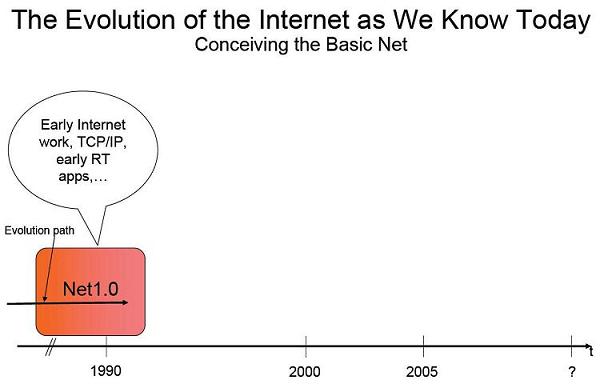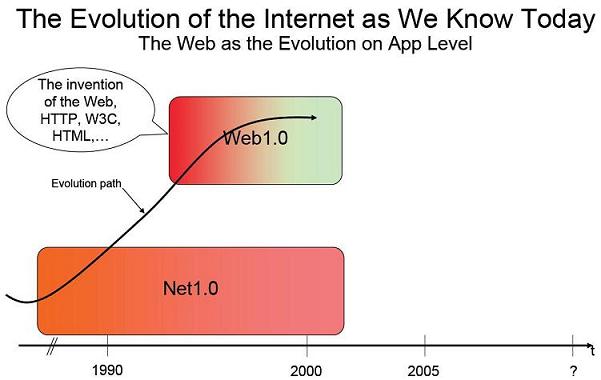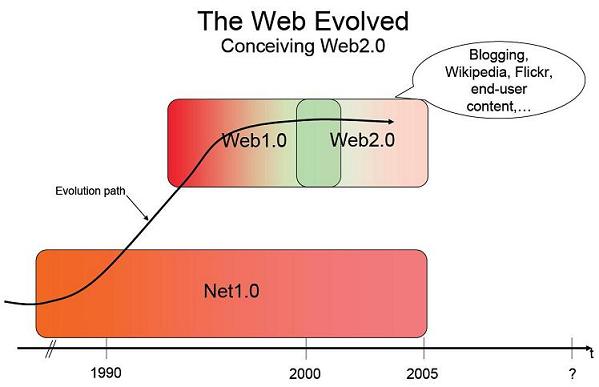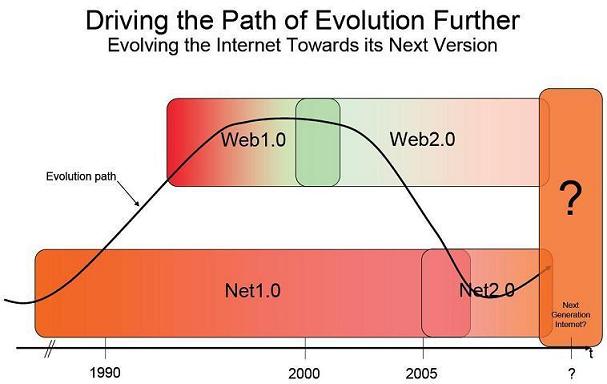Difference between revisions of "Evolution of the Internet"
Jump to navigation
Jump to search
| (One intermediate revision by the same user not shown) | |||
| Line 1: | Line 1: | ||
In the mid-1990s, the Web began (Web 1.0) as a repository of information and static content. Within a couple years, a huge amount of content was dynamic, returning custom results to users. By the turn of the century, the Web became more interactive (Web 1.5), allowing users to play, stop, rewind and fast forward through audio and video content. In the discussion of Web 2.0, the 1.0 and 1.5 generation labels are sometimes used, but they are not rigidly defined. | In the mid-1990s, the Web began (Web 1.0) as a repository of information and static content. Within a couple years, a huge amount of content was dynamic, returning custom results to users. By the turn of the century, the Web became more interactive (Web 1.5), allowing users to play, stop, rewind and fast forward through audio and video content. In the discussion of Web 2.0, the 1.0 and 1.5 generation labels are sometimes used, but they are not rigidly defined. | ||
[[Image:Evolution12.JPG]] | |||
[[Image:Evolution22.JPG]] | [[Image:Evolution12.JPG]] | ||
[[Image:Evolution32.JPG]] | |||
[[Image:Evolution43.JPG]] | |||
[[Image:Evolution22.JPG]] | |||
[[Image:Evolution32.JPG]] | |||
[[Image:Evolution43.JPG]] | |||
Latest revision as of 21:03, 6 May 2006
In the mid-1990s, the Web began (Web 1.0) as a repository of information and static content. Within a couple years, a huge amount of content was dynamic, returning custom results to users. By the turn of the century, the Web became more interactive (Web 1.5), allowing users to play, stop, rewind and fast forward through audio and video content. In the discussion of Web 2.0, the 1.0 and 1.5 generation labels are sometimes used, but they are not rigidly defined.



